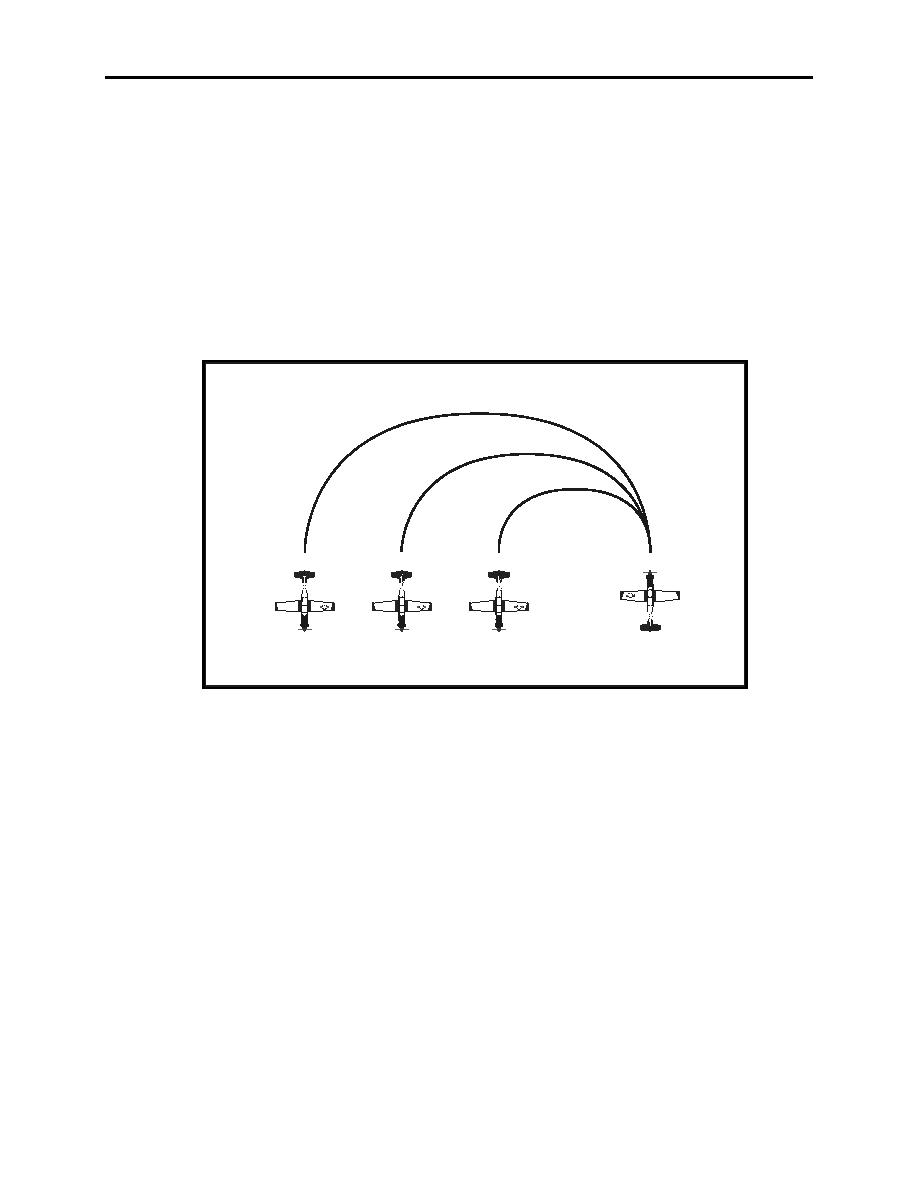 |
|||
|
|
|||
|
|
|||
| ||||||||||
|
|  T-6A FORMATION
CHAPTER ONE
103. RADIUS OF TURN
Another key to good formation flight is to clearly understand radius of turn and how it relates to
controlling position during formation. Because the lead aircraft acts as the source of all position
information, you need to anticipate position corrections in relation to the Lead's radius of turn.
As a Wingman in parade position, if the Lead turns into your position, you will require less
power to complete the turn because you fly a smaller radius of turn. When the Lead turns away
from your position, you will require more power because you will fly a larger turn radius. Radius
of turn is extremely important when executing parade turns, during the breakup and rendezvous
exercises, and especially during the tail-chase exercise. Figure 1-3 shows a constant airspeed,
level turn of varying Angle of Bank (AOB) (varying G-load).
o
15 AOB
30o AOB
o
45 AOB
Figure 1-3 Radius of Turn
104. FLIGHT DISCIPLINE
Discipline, as applied to formation flying, is the conduct of the flight members as individuals and
as part of a team. As a member of a team where individual error affects the overall performance
of the flight, each member of the flight must do his utmost to make the flight function properly.
1. The Lead. The formation Lead carries the primary responsibility of conducting the
sequence of maneuvers in a safe, orderly manner. He must always keep in mind the following:
a.
Keep the flight clear of other aircraft.
b.
Keep the flight clear of clouds unless under an IFR clearance.
c.
Keep the flight within the proper operating areas, comply with local course rules, and
Air Traffic Control (ATC) instructions.
INTRODUCTION TO FORMATION 1-3
|
|
Privacy Statement - Press Release - Copyright Information. - Contact Us |